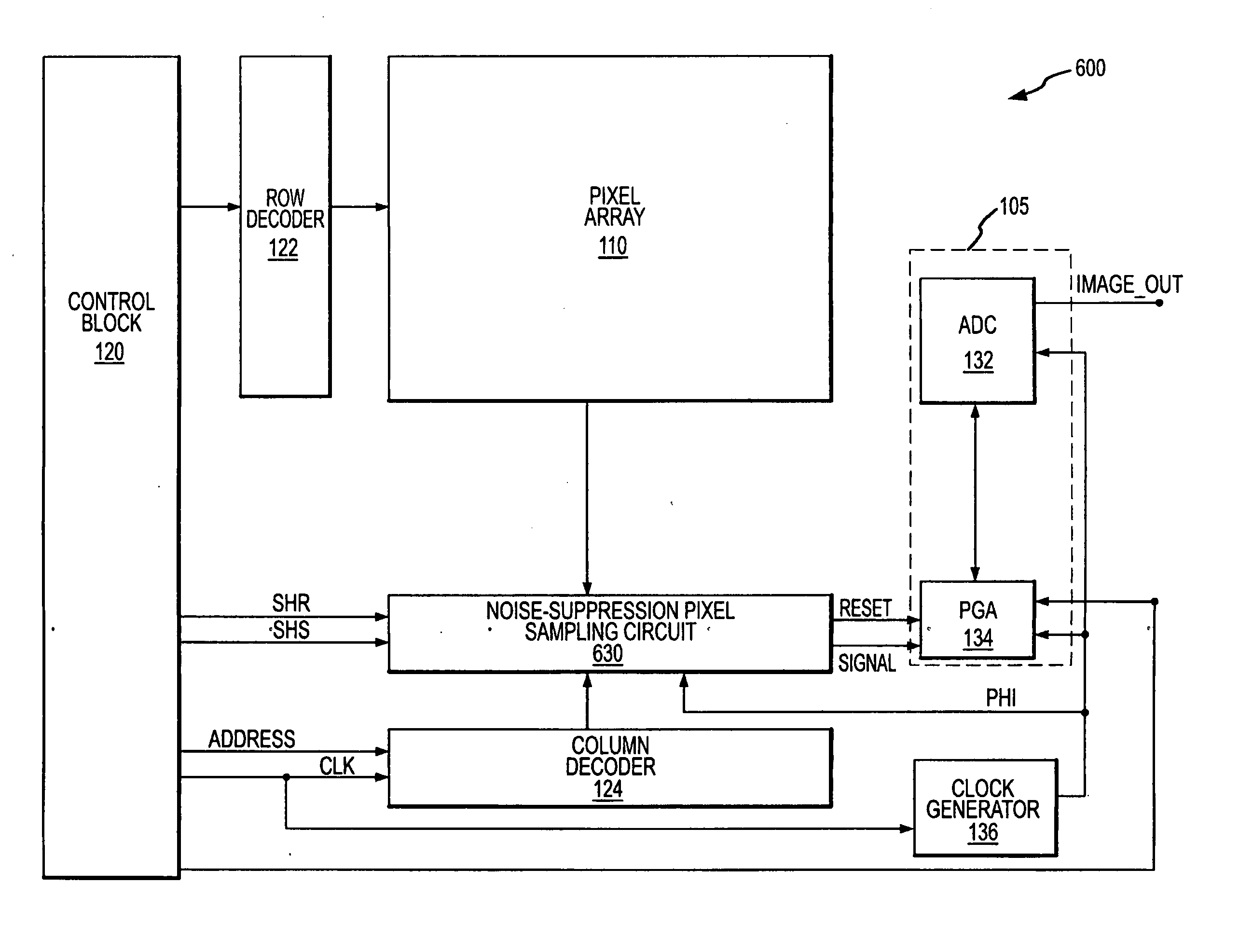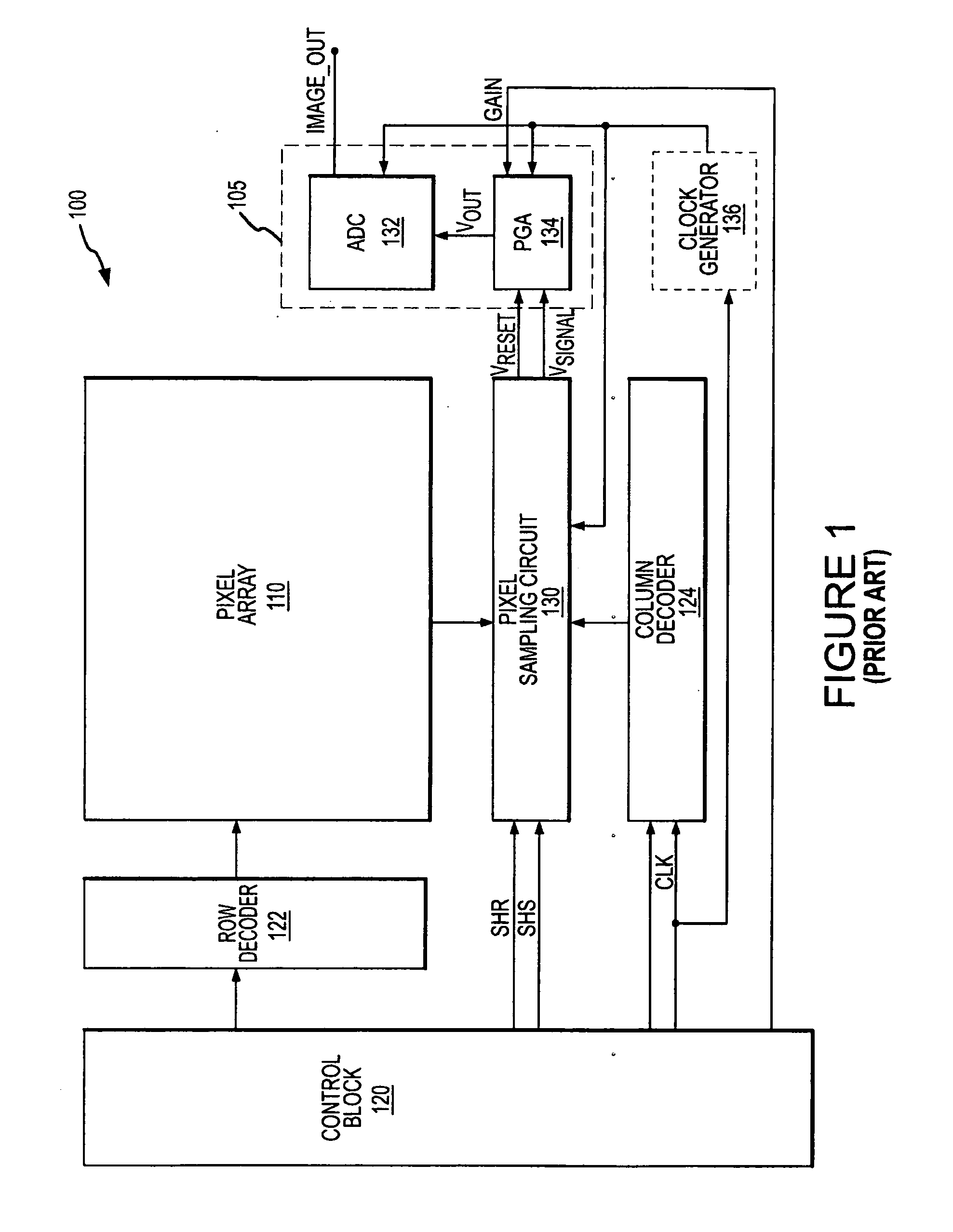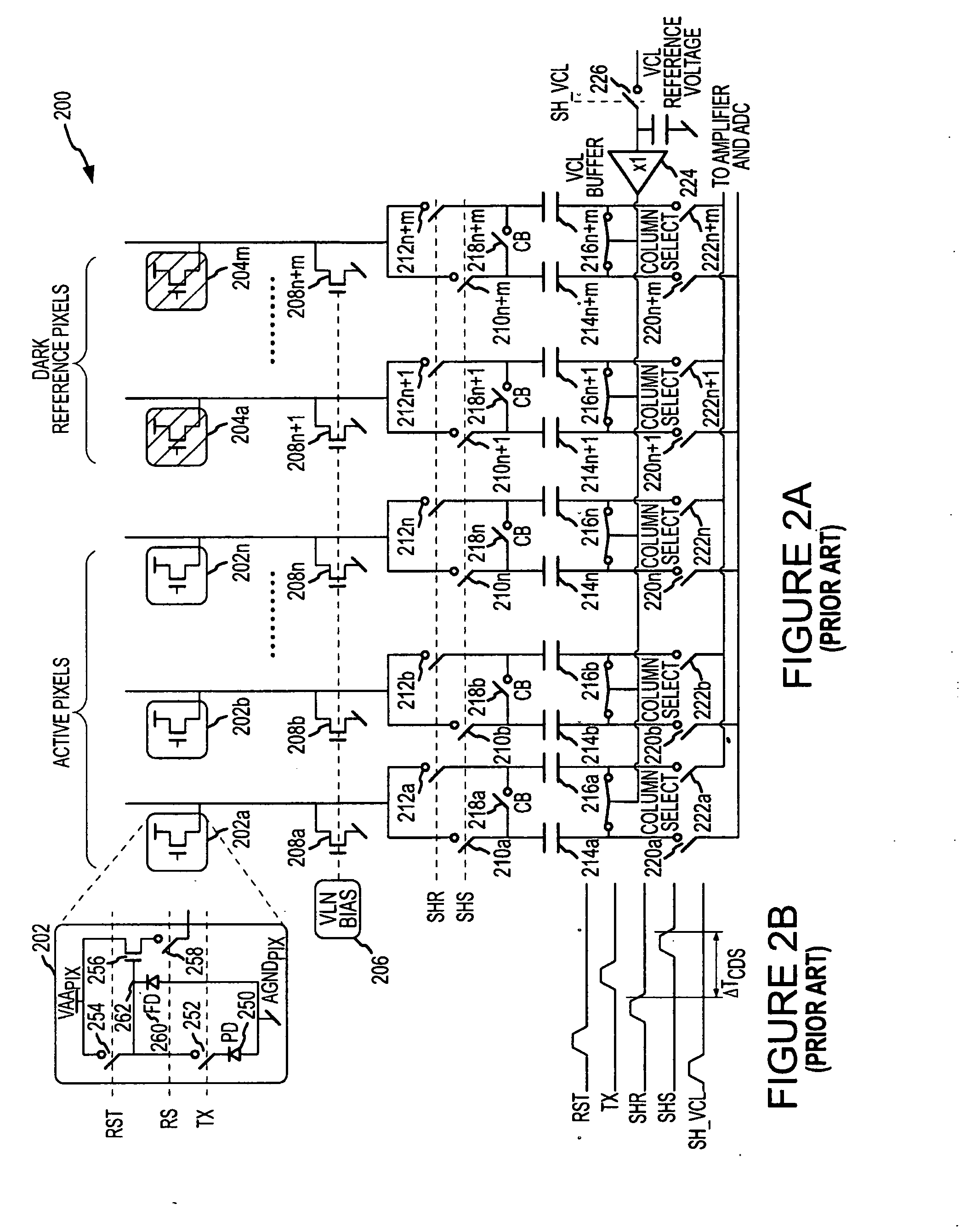Suppression of Row-Wise Noise in CMOS Image Sensors
a cmos image sensor and row-wise noise technology, applied in the field of image sensors, can solve the problems of correlated noise, non-correlated noise, horizontal stripes in the recreated, and single row pixel values are susceptible to and contain both correlated noise and non-correlated noise,
- Summary
- Abstract
- Description
- Claims
- Application Information
AI Technical Summary
Problems solved by technology
Method used
Image
Examples
Embodiment Construction
[0019]Certain details are set forth below to provide a sufficient understanding of embodiments of the invention. However, it will be clear to one skilled in the art that embodiments of the invention may be practiced without these particular details. Moreover, the particular embodiments of the present invention described herein are provided by way of example and should not be used to limit the scope of the invention to these particular embodiments. In other instances, well-known circuits, control signals, and timing protocols have not been shown in detail in order to avoid unnecessarily obscuring the invention.
[0020]FIG. 1 illustrates a block diagram of a prior art CMOS image sensing device 100 having a pixel array 110 of light-sensing photosensors as previously described, or as implemented by other circuitry known in the art. A plurality of pixels arranged in rows and columns are respectively connected to a plurality of row and column lines that are provided for the entire array 110...
PUM
 Login to View More
Login to View More Abstract
Description
Claims
Application Information
 Login to View More
Login to View More - R&D
- Intellectual Property
- Life Sciences
- Materials
- Tech Scout
- Unparalleled Data Quality
- Higher Quality Content
- 60% Fewer Hallucinations
Browse by: Latest US Patents, China's latest patents, Technical Efficacy Thesaurus, Application Domain, Technology Topic, Popular Technical Reports.
© 2025 PatSnap. All rights reserved.Legal|Privacy policy|Modern Slavery Act Transparency Statement|Sitemap|About US| Contact US: help@patsnap.com



